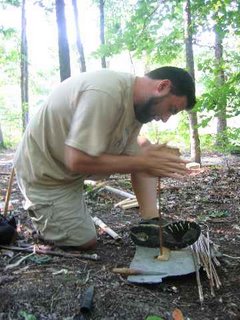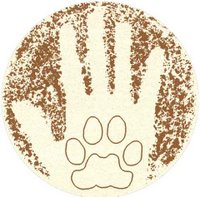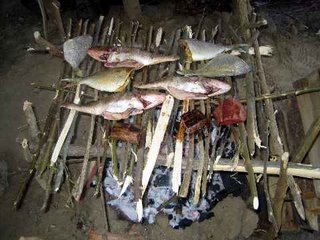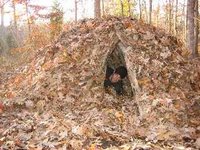
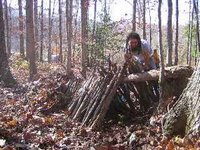


Well... if you made the debri hut properly only then would you wake up warm instead of cold and wet. Ask Earth Connections newest Primitive Skills Class graduates that were taught primitive wilderness survival skills. Although the rainy weather on the last day caused us some consternation, we persevered through the cold to the grand finally of basket making indoors. That's right, we wimped out to have limber hands and dry backsides to make beautiful baskets out of material we collected on site.
Note worthy:
Many of our students for this class are instructors from the Quest Center where they focus physical, mental and spiritual study in the ancient art of Ninjutsu which includes the topics that Earth Connection teaches.
What our students experienced:
Leaf hut shelter constuction, without tools or cord; friction fire making with the bow drill; primitive tool making; primitive water gathering and purification; primitive traps; rabbit hunting stick; edible plants, primitive cooking, wicker basketry from vines, plant and tree bark string, and burning out wooden bowls.






